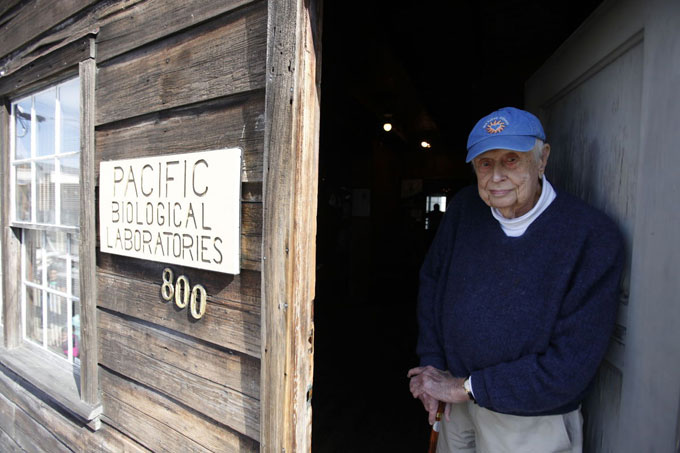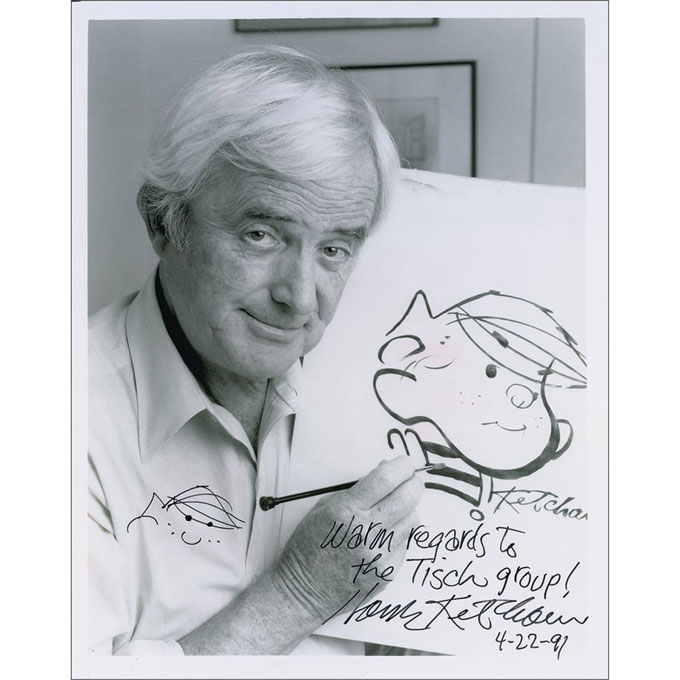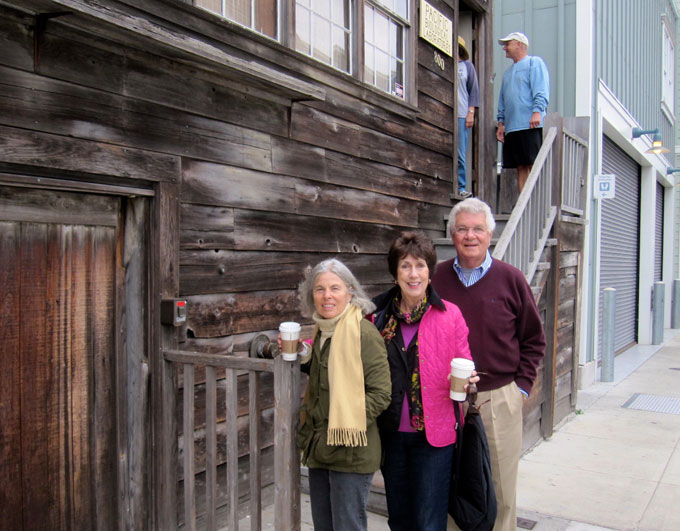The recent death of Monterey, California businessman Frank Wright at age 98 served as a reminder that the life of Doc’s Lab—Ed Ricketts’s marine biology laboratory on Cannery Row—had two distinct phases. The 1930s and 1940s were the period of John Steinbeck and Ricketts and the artists and poets and philosophers who gathered around them. The 1950s began the Lab’s second incarnation as a men’s club of painters, cartoonists, teachers, journalists, lawyers, and business people founded by Frank and his friends—all with a passionate interest in Steinbeck and Ricketts and a way of life that was already fading into the past. Like the earlier, even more casual men’s club, Frank’s group met and socialized and partied in the Lab’s raffish rooms and outdoor concrete deck and holding tanks overlooking Monterey Bay. In the process they kept the Lab largely as it was, preserving it for posterity.
The Men’s Club That Saved Doc’s Lab
Frank met Ricketts after joining the Army in 1942, and they remained close until Ed died. In the early 1950s, Frank and two other men bought the Lab as a meeting place for their circle of artists, educators, and fellow enthusiasts. For a slim sampling of this second generation Cannery Row men’s club, there was Gus Arriola, the brilliant creator of the comic strip Gordo. Eldon Dedini, the farm boy from South Monterey County who became a successful and sophisticated cartoonist for Esquire and Playboy. Morgan Stock, the teacher and director who spearheaded the drama department at Monterey Peninsula College, which in turn named a theater for him. The irrepressible, crusading attorney Bill Stewart. The Dennis the Menace cartoon creator Hank Ketcham (in photo), also a serious painter. Like Steinbeck and Ricketts, they were creative types drawn together by a love of talk, drink, and music. The Monterey Jazz Festival grew from their collaboration. So did the idea of making Doc’s Lab a living museum, now under management by Monterey, California’s department of cultural affairs.
The End of an Era on Cannery Row
A personal memory: Years ago my late wife Nancy and I were walking along Cannery Row with Sue and E.J. Eckert (in photo to Nancy’s right). When we stopped in front of the Lab we got lucky. Frank Wright was standing on the stairs with Dennis Copeland, cultural affairs director for Monterey, California. Frank offered to give us a tour. He was a natural storyteller, warm and personable and charming, and when we left, walking out onto the bright morning sunlight of Cannery Row, the Eckerts said, “Boy, that was something!” They’ve never forgotten the experience. It was Frank’s gift to many when he was alive, and he was active well into his 90s. His death was indeed the end of an era.
Photo of Frank Wright courtesy Monterey County Weekly.





Very nice tribute – thank you Steve.
And nice to be reminded of the generosity of Frank Wright and friends – the men who saved such an important piece of our history. Let’s lift a glass to Frank Wright and the gentlemen of The Men’s Club in thanks.
Just one small observation. The lab was NOT left largely as it was. All the interior walls were removed, making the lab into one large space. The entrance to the bathroom was moved outdoors; it had used to be in the kitchen. The exterior, however, still looks the same.
John,
thanks for the important information. You of course would know.
Steve
Thank you for this which I first read a year ago and to which I returned tonight.
I arrived in Monterey in June, 1958 to study at the ALS (Now DLI) in the Presidio. I was already a Steinbeck enthusiast and during my time there, I got a library card and continued to read his work. I’m pretty sure I’ve read almost every word he wrote… East of Eden twice, after having read his published notes recorded while he wrote it.
I met some of the folks who were meeting and partying at Doc’s place while appearing in Paint Your Wagon at the Forest Theater in Carmel and then as an usher at the very first Jazz Festival!
The most memorable 3 days of my life, part of the most stimulation six months of my life. I’ve been returning regularly ever since… staying at the hostel up on Hawthorne street that was once the Carpenters’ Union Hall.
Robert,
it sounds like you have had rich experiences on the Peninsula. You must have met some of the fascinating people at the laboratory at that time. I drove by that hostel on Hawthorne this morning, by the way.